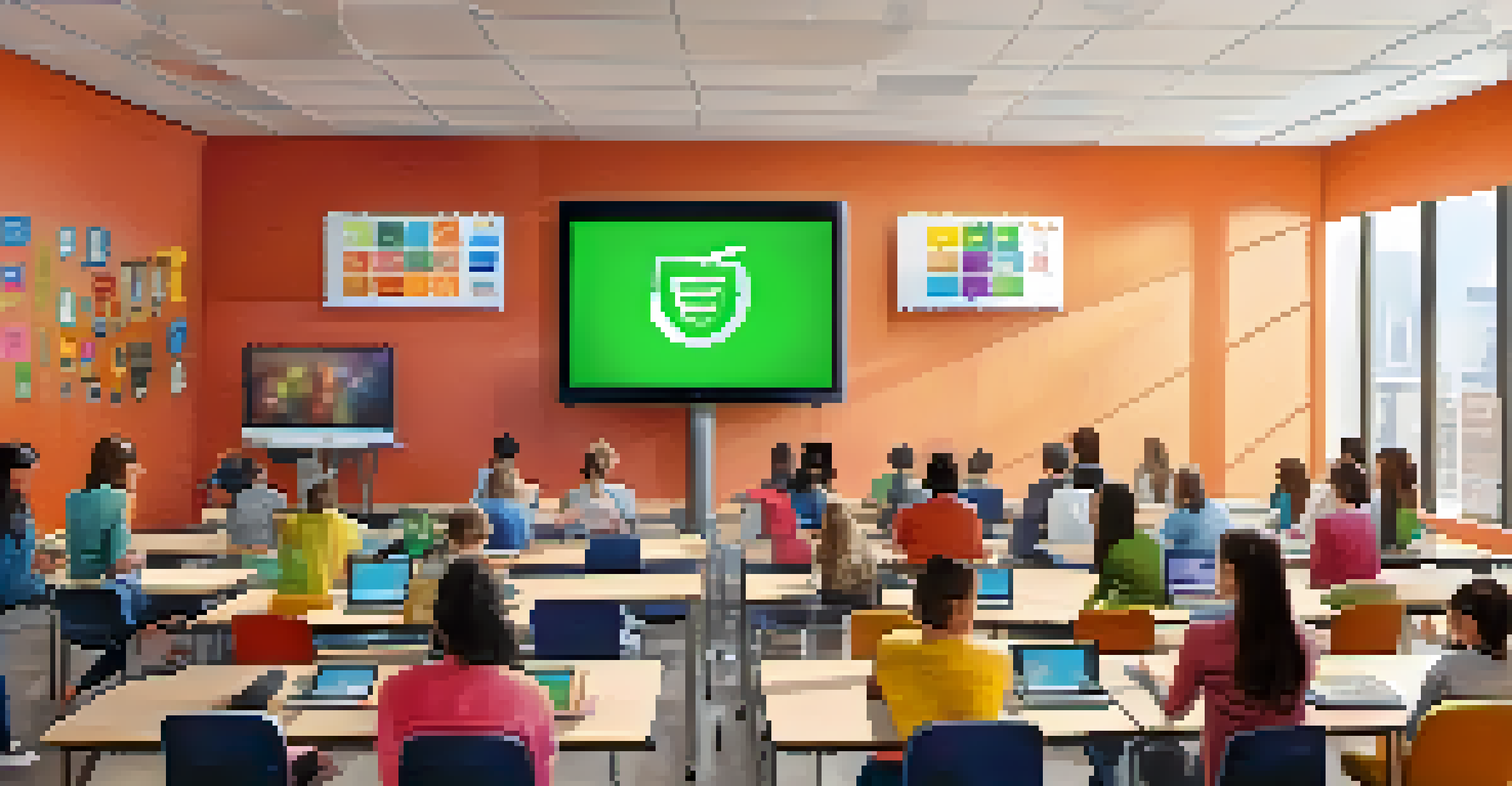The Power of Formative Assessment in Student Development

Understanding Formative Assessment and Its Benefits
Formative assessment refers to a range of informal and formal assessments conducted during the learning process. Unlike summative assessments, which evaluate student learning at the end of an instructional unit, formative assessments provide ongoing feedback. This continuous feedback helps both teachers and students identify areas of strength and weakness, ultimately guiding future learning activities.
Feedback is the breakfast of champions.
One of the key benefits of formative assessment is its ability to foster a growth mindset in students. When students receive constructive feedback, they are encouraged to view challenges as opportunities for improvement. This mindset shift promotes resilience and a love for learning, which is essential for long-term academic success.
Moreover, formative assessments empower students to take ownership of their learning. By actively engaging with the assessment process, students can set personal goals and monitor their progress. This self-directed approach not only enhances their motivation but also builds critical thinking and self-evaluation skills.
Types of Formative Assessment Techniques
There are various techniques that educators can use for formative assessment, making it adaptable to different learning environments. Some popular methods include quizzes, peer assessments, and exit tickets, each offering unique benefits. For instance, exit tickets allow students to reflect on what they've learned at the end of a class, providing immediate insights for teachers.

Another effective technique is the use of observational assessments, where teachers monitor students during group activities. This real-time observation helps educators gauge student understanding and engagement, allowing for timely interventions. By noting how students interact and contribute, teachers can tailor their approaches to meet individual needs.
Formative Assessment Enhances Learning
Formative assessments provide ongoing feedback that helps students and teachers identify strengths and weaknesses during the learning process.
Additionally, digital tools like online quizzes or learning management systems enable instant feedback and data collection. These platforms make it easier for educators to analyze student performance over time. With this data, teachers can adjust their instructional strategies to better support their students’ learning journeys.
Creating a Safe Learning Environment
A crucial aspect of effective formative assessment is cultivating a safe and supportive learning environment. Students need to feel comfortable sharing their thoughts and making mistakes without fear of judgment. When they know their classroom is a judgment-free zone, they are more likely to engage openly in the assessment process.
Mistakes should be examined, learned from, and discarded; not denied, avoided, or ignored.
Teachers can promote this safe space by modeling vulnerability themselves. For instance, sharing their learning experiences and mistakes sets a positive example for students. This approach encourages learners to embrace challenges and view feedback as a tool for growth rather than a critique of their abilities.
Furthermore, incorporating collaborative activities can enhance the sense of community in the classroom. When students work together, they learn from each other and build trust. This camaraderie fosters a richer learning experience, making formative assessments feel like a shared journey rather than a solitary task.
The Role of Feedback in Formative Assessment
Feedback is the cornerstone of formative assessment, guiding students toward improvement. Effective feedback should be specific, timely, and actionable, helping students understand what they did well and where they can improve. For example, instead of simply stating a student got a question wrong, a teacher might explain the reasoning behind the correct answer.
Moreover, encouraging a dialogue around feedback can enhance its effectiveness. Allowing students to ask questions and discuss their misunderstandings creates a collaborative learning environment. This interaction not only clarifies doubts but also reinforces the importance of feedback as a tool for growth.
Feedback Fuels Growth and Improvement
Effective feedback in formative assessments is specific, timely, and actionable, guiding students toward understanding and improvement.
It's also important for feedback to be framed positively. Highlighting strengths while addressing areas for improvement can boost students' confidence. When students feel supported rather than criticized, they are more likely to embrace the feedback and apply it to their future work.
Integrating Formative Assessment into Daily Lessons
Integrating formative assessment into daily lessons doesn't have to be a daunting task. In fact, it can be seamlessly woven into the fabric of classroom activities. For instance, teachers can start each lesson with a quick poll or a question to gauge prior knowledge, setting the stage for targeted instruction.
Additionally, incorporating formative assessments into group work can enhance student collaboration. By assigning roles within groups and having students assess each other's contributions, they learn to value peer feedback. This not only develops communication skills but also promotes accountability among group members.
Lastly, reflection activities at the end of a lesson can serve as a powerful formative assessment tool. Asking students to write a brief reflection on what they learned helps solidify their understanding. This practice also provides teachers with insights into student comprehension and areas that may need further clarification.
Challenges in Implementing Formative Assessment
While formative assessment offers numerous benefits, implementing it can present challenges for educators. Time constraints often top the list, as teachers navigate busy schedules filled with curriculum demands. However, integrating formative assessments doesn't have to be time-consuming; even quick, informal checks can provide valuable insights.
Another challenge is ensuring that feedback is effective and actionable. Teachers may struggle with providing personalized feedback, especially in larger classes. Using technology can help streamline this process, allowing educators to track student progress and deliver tailored feedback efficiently.
Safe Environment Boosts Engagement
Creating a supportive learning environment encourages students to share openly, embrace challenges, and view feedback as a tool for growth.
Finally, some students may initially resist formative assessments, viewing them as additional pressure. It’s essential for educators to communicate the purpose of these assessments clearly. Framing them as opportunities for growth rather than evaluations can help shift students' perspectives and promote a more positive attitude toward the assessment process.
The Future of Formative Assessment in Education
As education continues to evolve, the role of formative assessment is becoming increasingly prominent. Advances in technology offer new avenues for implementing these assessments, making it easier for educators to gather data and provide feedback. For example, adaptive learning platforms can adjust to individual student needs, ensuring personalized learning experiences.
Furthermore, the integration of social-emotional learning (SEL) into formative assessment is gaining traction. Educators are recognizing the importance of addressing students' emotional well-being alongside academic progress. By incorporating SEL into assessments, teachers can better support the whole child, fostering both academic and personal growth.

Ultimately, the future of formative assessment lies in its adaptability and emphasis on student engagement. As educators continue to explore innovative strategies, the focus will remain on creating meaningful learning experiences that empower students. This evolution promises to enhance not only academic performance but also students' overall development.